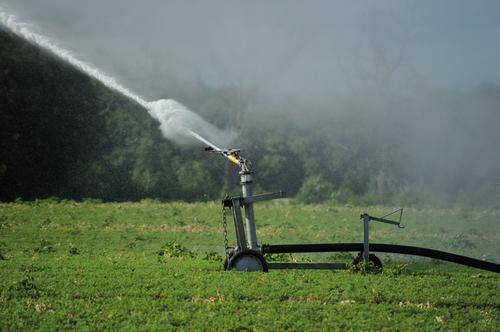Wastewater reuse for agriculture
Treated wastewater from off-site treatment plants can be reused for irrigation of parks and gardens, agriculture and horticulture or tree plantation, if these exist or can be established not far from the wastewater treatment plants. For these purposes, the wastewater should generally be treated to secondary wastewater treatment standard (< 20 mg/L BOD and < 30 mg/L suspended solids). Total coliforms should be < 1000 organisms per 100 mL for irrigation by spraying. When sub-surface irrigation is used, this requirement may not be necessary. A period of non-entry to irrigated sites may need to be observed, particularly for wastewater-irrigated parks and gardens. Irrigation of vegetables for direct human consumption requires a much stricter guideline.
Because requirement of wastewater for plant growth is governed by climatic conditions, soil and plant type, there may be a need for storage of the wastewater. An alternative to storage, if land area is not available for this purpose, is the disposal of wastewater excessing requirements. Land application of wastewater (land-based treatment) can also be considered as treatment and reuse of wastewater when combined with growing of grasses for grazing.
(UNEP 2000)



